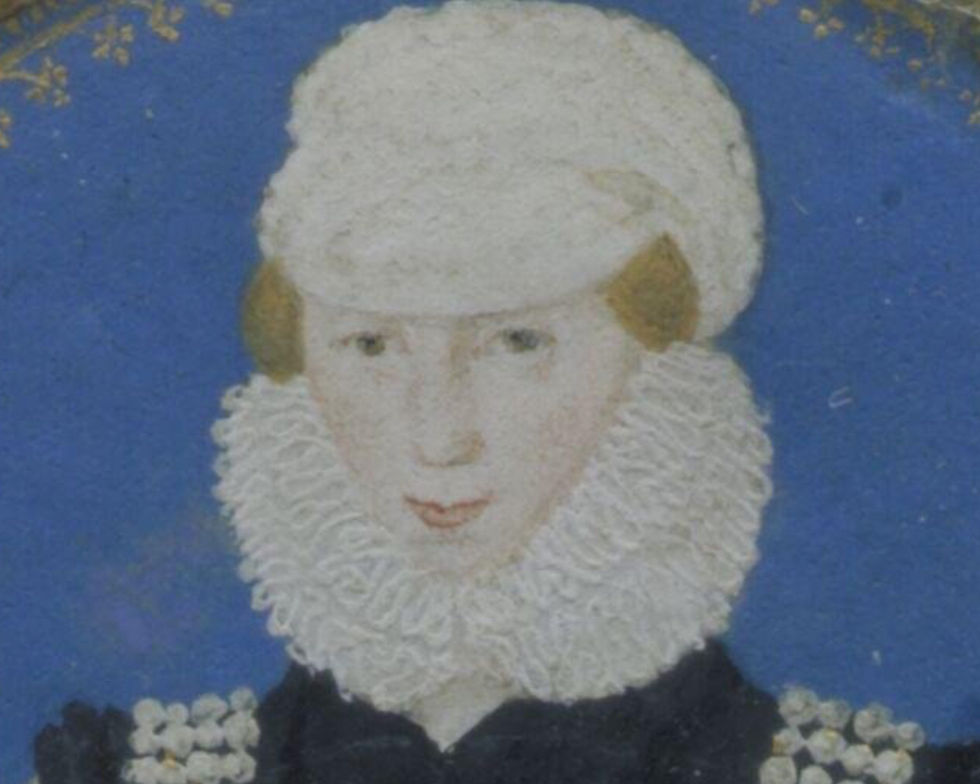ON THIS DAY - 25 December 1634
- thedudleywomen
- Dec 25, 2024
- 4 min read
Updated: Oct 2
On This Day (25 Dec) in 1634, 91 year old Lettice Knollys, Countess of Leicester, died at her home in Drayton Bassett, Staffordshire.

Lettice had made Drayton Bassett her primary residence in c.1593. The manor had been bequeathed to her following her husband Robert Dudley, 1st Earl of Leicester's death in September 1588. Initially, her right to inherit the manor and its lands, the lease of which Dudley himself had purchased in 1579, had been disputed; however, with the support of her son, Robert Devereux, 2nd Earl of Essex, Lettice was able to rightfully claim her inheritance.
Following her marriage to Sir Christopher Blount in 1589, the couple resided between Drayton Bassett and other properties previously belonging to Dudley, including Wanstead Hall, Essex and the eponymous Leicester House, on The Strand, Westminster. However, in the early 1590s, Lettice bestowed these properties on her son Robert, who renamed Leicester House as 'Essex House'; Essex House soon became a gathering place for the younger (and increasing disillusioned) Elizabethan generation, including where Lettice's daughter Penelope Devereux, Lady Rich continued her long-standing affair with Charles Blount, Lord Mountjoy.

On moving to Drayton Bassett, Christopher Blount, who had previously acted as Dudley's Master of Horse and had accompanied him on military campaigns, also began his political career, being elected as a Member of Parliament for Staffordshire from 1593, and Justice of the Peace from 1594. However, Blount continued with his military career, accompanying his stepson on his military campaigns, including the disastrous Ireland campaign in 1599; whilst Essex was imprisoned, Blount returned to Drayton, and his life with Lettice. Be it misguided support, or boredom of the country, but Blount was invited by Robert Devereux to join his ill-fated attempted rebellion, known as 'Essex's Rebellion' in February 1601, which ended in the arrest and execution of both men.
Lettice does not appear to have been alone at Drayton, with visits from multiple generations of her family. In 1593, her sister Catherine came to live with her, on the death of her husband, and her daughter Penelope (and her children) were also regular visitors, until her own death in 1607. Lettice also hosted the wedding of her granddaughter Frances Devereux in 1617, to William Seymour, the grandson of Katherine Grey and Edward Seymour. However, it was her grandson, Robert Devereux, 3rd Earl of Essex, who spent long periods over the winter at Drayton Bassett and Chartley, following his failed marriage and subsequent annulment in 1613, with his first wife Frances Howard (granddaughter of Margaret Audley, and her second husband Thomas Howard, 4th Duke of Norfolk).
Lettice died in the morning of Christmas Day of 1634; it was said that just prior to her death, she was still active, walking a mile a day. She had outlived her three husbands, and her six (known) children, as well as all but one of her 14 siblings (Sir Francis Knollys) - she had lost two of her closest siblings, brother William and sister Catherine two years previously. However, Lettice was survived by many grandchildren and great-grandchildren, including granddaughter Lucy Percy [Hay], Countess of Carlisle, one of Queen Henrietta Maria's ladies-of-the-bedchamber, who was known for her 'charm, wit and beauty', inspiring many poets, and gained notoriety being involved in multiple scandals and affairs.

As per her request set out in her will, Lettice was buried with her second husband Robert Dudley, within the Beauchamp Chapel, St Mary's Church, Warwick, in February 1635, with an elaborate tomb with matching effigies, that was commissioned and funded by herself. Her will had been proved the previous month, with beneficiaries including her surviving brother Francis, and her grandson, Robert. There were also instructions made for the provision of her household, as well as a contribution made to Warwick's poor.
With Lettice's death came the end of the 'Great Elizabethans'. She had been born in the first half of the 16th century, and had lived through the reigns of six (crowned) monarchs. She had lived to an extraordinary 91 years, much more than the average life-span of the time, although at the time of her death, no one was quite sure how old she was (an inscription of her tomb claimed that she was in her '96th year', although her date and year of birth is now confirmed, as her father Francis Knollys recorded hers (and her siblings's) birth dates in a Latin dictionary, which was discovered in the 20th century at their old home of Greys Court, Rotherfield Greys, Oxon.
Lettice had been involved in scandal regarding her relationship with Robert Dudley, both during her first marriage, her widowship and through to their secret marriage in 1578, leading to her expulsion from court, with Elizabeth, her kinswoman and once close confidant, brandishing her "that she-wolf". And Lettice had also seen tragedy, with the executions of her eldest son and third husband in 1601, as well as the death of her youngest son Robert, Lord Denbigh in 1584. But she persevered, outliving all of her peers, and leaving a legacy of grandchildren and great-grandchildren, some of whom would continue to play important roles in the rapidly-changing 17th century.
Recommended Reading:





Comments